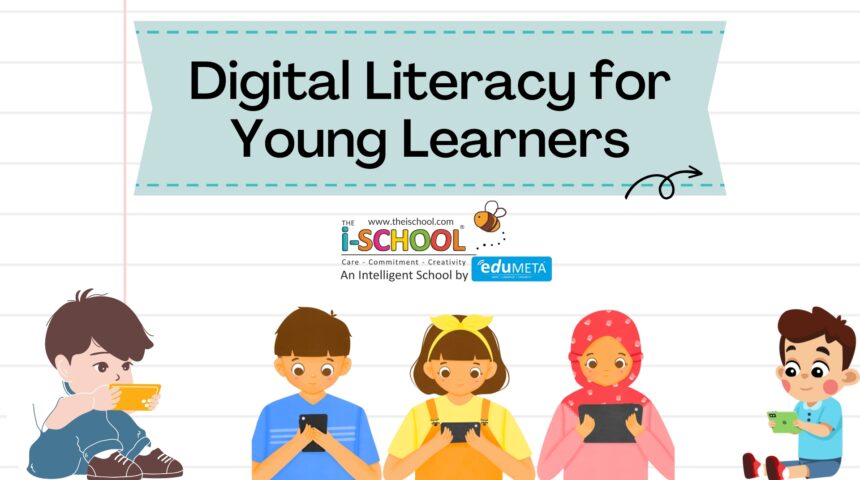Digital Literacy for Young Learners

In today’s fast-paced digital world, children are exposed to technology from an early age. While the internet offers a wealth of knowledge and opportunities, it also presents challenges and risks that young learners need to navigate. Digital literacy, the ability to use, understand, and critically evaluate digital tools and content, is essential for children to thrive in this environment. Teaching digital literacy to young learners equips them with the skills needed to safely and effectively engage with technology, making it an indispensable part of modern education.
What Is Digital Literacy?
Digital literacy goes beyond basic computer skills. It encompasses a wide range of abilities, including the safe and responsible use of digital devices, understanding how to evaluate the credibility of online information, recognizing the impact of digital footprints, and fostering ethical online behavior. For young learners, digital literacy also involves developing critical thinking skills to interpret and analyze the vast amounts of information available online.
Why Digital Literacy Is Important for Young Learners
As technology becomes increasingly integrated into our daily lives, digital literacy is no longer optional—it’s a fundamental skill. Here’s why it’s crucial for young learners:
1. Safe Online Practices:
Children need to understand how to protect themselves online. This includes recognizing and avoiding cyberbullying, understanding privacy settings, and knowing how to report inappropriate content. Teaching children about safe online practices helps prevent potential dangers, such as identity theft, exposure to harmful content, and online predators.
2. Critical Evaluation of Information:
The internet is a vast source of information, but not all of it is accurate or trustworthy. Digital literacy helps young learners develop the ability to critically evaluate the information they encounter online. They learn to distinguish between credible sources and misinformation, an essential skill in an age of fake news and social media influence.
3. Responsible Digital Citizenship:
Being a good digital citizen involves using technology in a way that is respectful, ethical, and mindful of others. This includes understanding the consequences of online actions, such as the impact of sharing personal information or posting negative comments. Teaching responsible digital citizenship helps children become conscientious members of the online community.
4. Enhancing Learning and Creativity:
Digital tools offer numerous opportunities for learning and creativity. From educational apps to interactive games, technology can enhance traditional learning methods and make education more engaging. Digital literacy enables children to harness these tools effectively, turning them into active learners who can explore, create, and share knowledge in innovative ways.
How to Teach Digital Literacy to Young Learners
Teaching digital literacy to young learners involves a combination of guidance, practice, and ongoing conversation. Here are some strategies to help children develop these essential skills:
1. Start Early:
Introduce basic digital literacy concepts as soon as children begin using digital devices. Simple lessons on how to navigate a tablet or the importance of asking for permission before downloading apps can lay the groundwork for more advanced skills later on.
2. Use Age-Appropriate Resources:
Choose educational resources that are designed for young learners. Interactive games, videos, and apps that focus on digital safety and literacy can make learning fun and accessible. Resources like Common Sense Media offer age-appropriate content that teaches children about online safety and digital citizenship.
3. Model Good Digital Habits:
Children learn by observing the adults around them. By modeling good digital habits—such as using technology in moderation, being mindful of screen time, and demonstrating how to verify information online—parents and educators can set a positive example for young learners.
4. Encourage Open Dialogue:
Create an environment where children feel comfortable discussing their online experiences. Encourage them to ask questions, share their concerns, and talk about what they encounter online. Open dialogue helps children navigate the digital world with confidence, knowing they have support and guidance.
5. Incorporate Digital Literacy into the Curriculum:
Schools and educators can integrate digital literacy into the curriculum by including lessons on online safety, digital citizenship, and critical thinking. Activities that involve researching online, creating digital content, or analyzing media can help reinforce these skills in a practical and engaging way.
Conclusion
Digital literacy is an essential skill for young learners in the 21st century. By teaching children how to use technology safely, responsibly, and effectively, we empower them to navigate the digital world with confidence and competence. As they grow, these skills will become increasingly important, not only for their academic success but also for their personal development and future careers. By fostering digital literacy from an early age, we equip young learners with the tools they need to succeed in an increasingly digital world.
